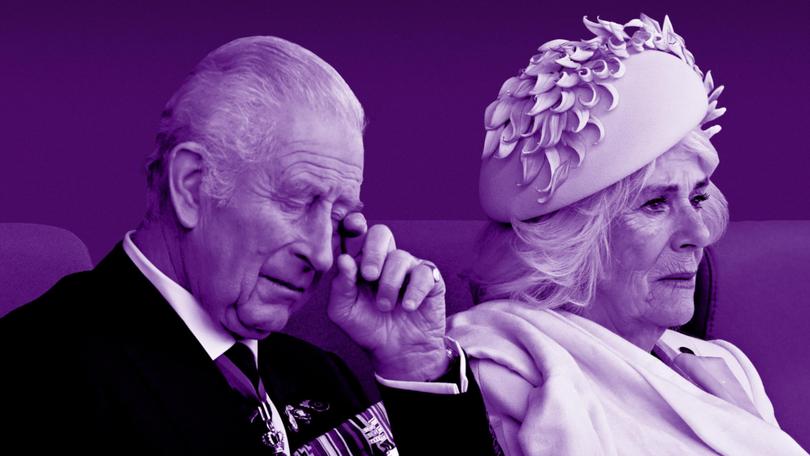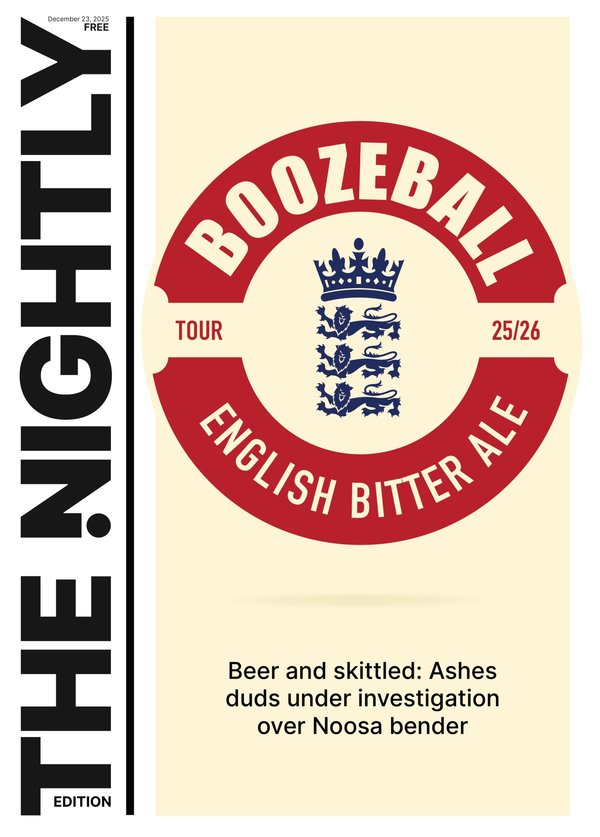JENI O’DOWD: Why I couldn’t care less about King Charles and Queen Camilla’s tour of Australia

I couldn’t care less about King Charles and Camilla’s visit on Friday. What I do care about is why Australian taxpayers are footing the bill for one of the world’s wealthiest couples to do a round of meet and greets while many of us are struggling to afford basic groceries and pay our bills.
The 75-year-old monarch will arrive on Friday with his wife, Camilla, for the customary round of official ceremonies, including gala receptions, speeches, military reviews, and meet-and-greets.
Royal tours typically cost Australia millions of dollars. In 2018, Prince Harry and Meghan Markle’s tour cost Australian taxpayers about $400,000, covering security, accommodation, and logistics.
Sign up to The Nightly's newsletters.
Get the first look at the digital newspaper, curated daily stories and breaking headlines delivered to your inbox.
By continuing you agree to our Terms and Privacy Policy.But at least it was entertaining. The former Suits actress debuted as a working royal family member on a major international trip. Their visit also focused on causes like youth leadership, conservation, and the Invictus Games, held in Sydney that year.
Photos of the young couple meeting Bondi lifeguards went around the world, showing off our famous beach.
But not all royal visits are memorable for the right reasons.
I’ve attended royal receptions in the past, and I can tell you from experience they’re not always as glamorous as they seem.
I remember a reception with Princess Fergie in Sydney back in 1992, and honestly, it was just boring. Many attendees didn’t want to be there, and Fergie herself (pretty unremarkable in person) seemed just as uninterested, going through the motions to fulfil a duty. It was more of a formal obligation than any real connection with the public.
This is exactly what these royal visits often feel like — outdated obligations that cost taxpayers millions yet provide little value.
We’re footing the bill for events that have lost relevance in today’s world. With King Charles and Camilla’s visit, it’s hard not to wonder if we’re just witnessing another round of empty ceremonies.
Prince William and Kate Middleton toured Australia for 10 days in 2014, and the cost of that visit was estimated to be hundreds of thousands of dollars in security and transportation alone. Add in those long official dinners, ceremonies and public engagements, and the cost substantially increases.
In 2024, when Australians are tightening their belts, does it make sense to spend millions on a royal visit instead of using that money to ease pressure on our healthcare system or education? Or to simply relieve pressure on the cost of the weekly grocery bill?
Technically, the Government could have refused this royal visit, but this is rare, especially given the country is part of the Commonwealth. But given the economic struggles we’re all facing, should this visit have at least been deferred?
As the Australian Republican Movement said: “This tour is a chance to wave goodbye to royal reign. It’s time we see this visit not as a celebration but as a final farewell to an outdated institution.
“By all means, let’s welcome Charles and Camilla to Australia, but let’s see this as the last visit of a sitting monarch. Makes a lot of sense,” co-chair Esther Anatolitis said in a video posted on X.
I’m not a rabid republican, but I could not agree more.
It’s ridiculous that in today’s modern world, Australia does not have an Australian as its head of state, elected for and by Australians.
King Charles is a relic of our colonial past, and it’s time we move forward. Does anyone really believe he reflects the values, identity, and culture of our multicultural country?
The referendum on whether Australia should become a republic was held more than 20 years ago, on November 6, 1999. It failed mainly due to disagreement over the proposed model for a republic, which was the president should be appointed by the majority of the Federal Parliament rather than directly elected by the public.
At the time, Australia was strongly conservative, with voters seeing the monarchy as a source of stability and tradition. Significantly, the referendum coincided with a period of economic stability, so people could not see any practical improvements in a change.
Fast-forward to today, and does the monarchy still hold the same relevance? With rising republican sentiment and Australia evolving into a diverse, independent nation, clinging to the British monarchy feels more like nostalgia than a reflection of who we are now.
